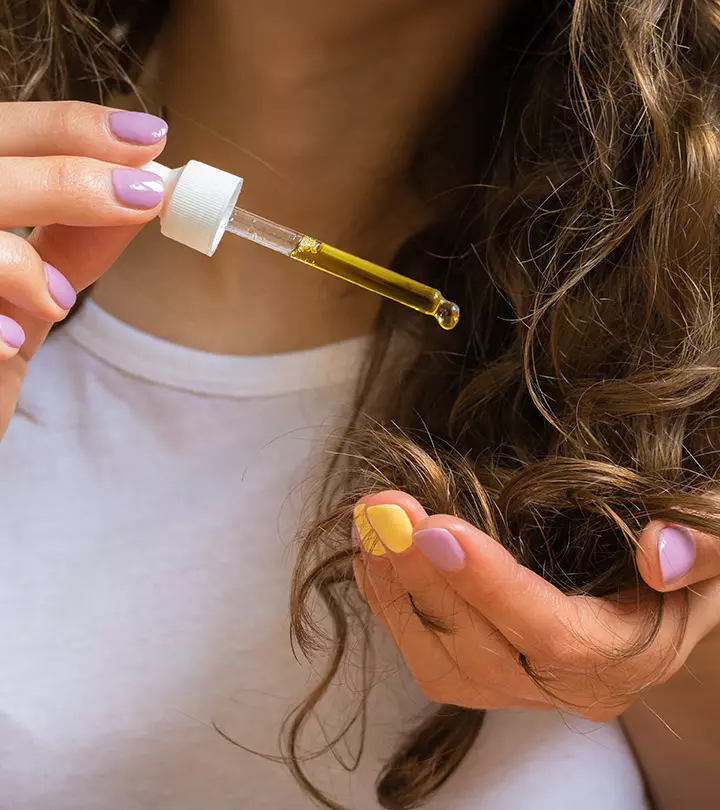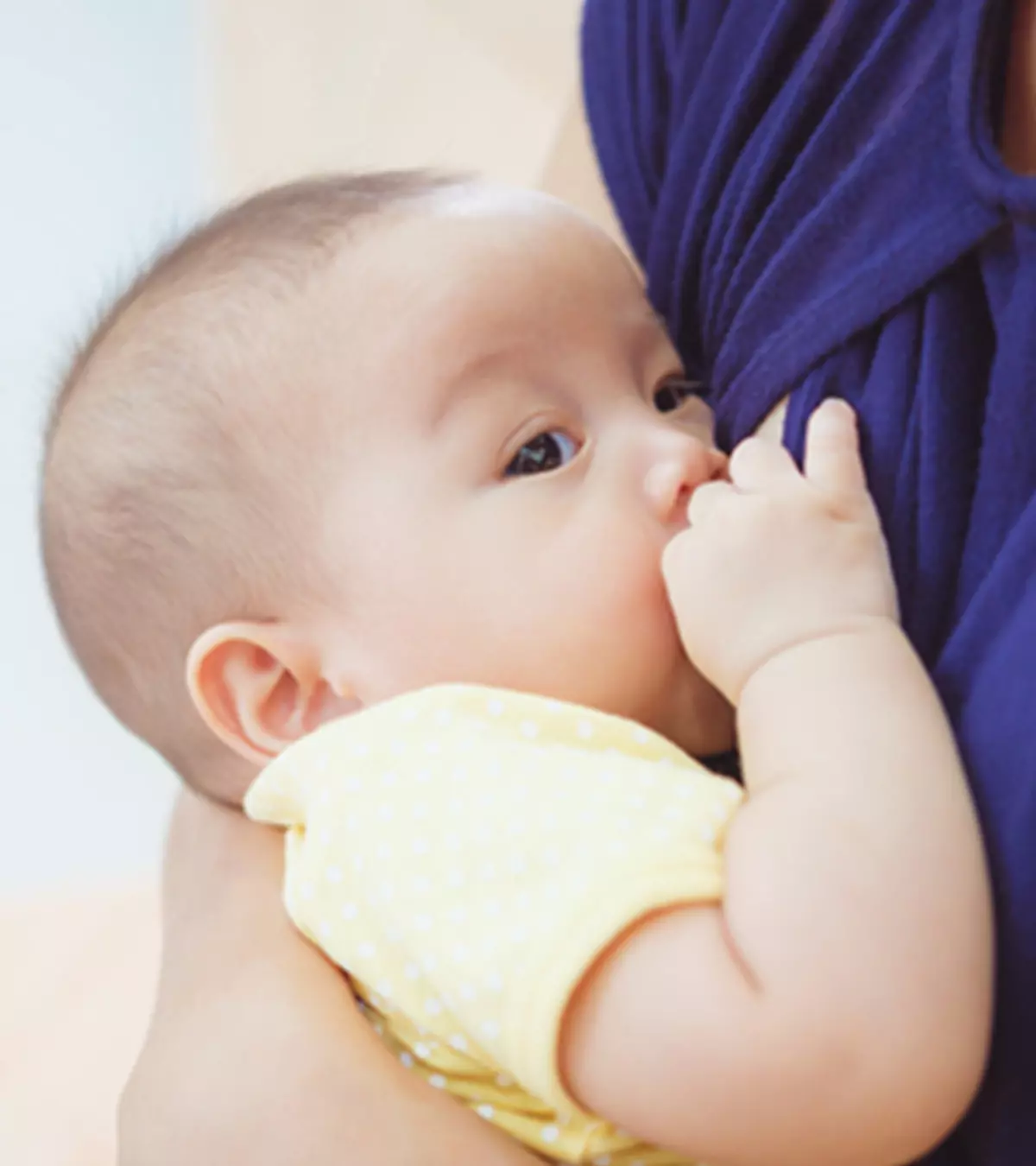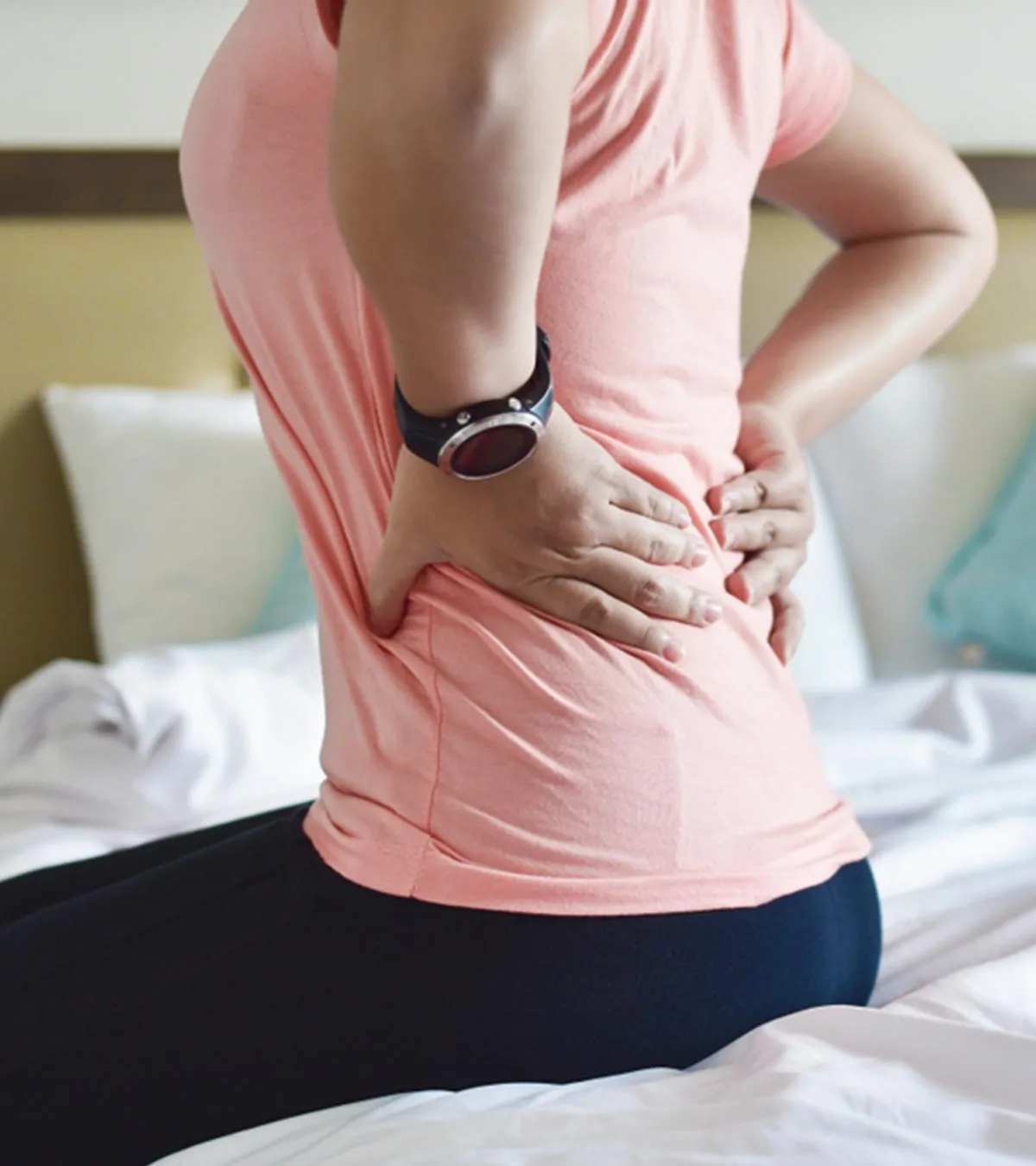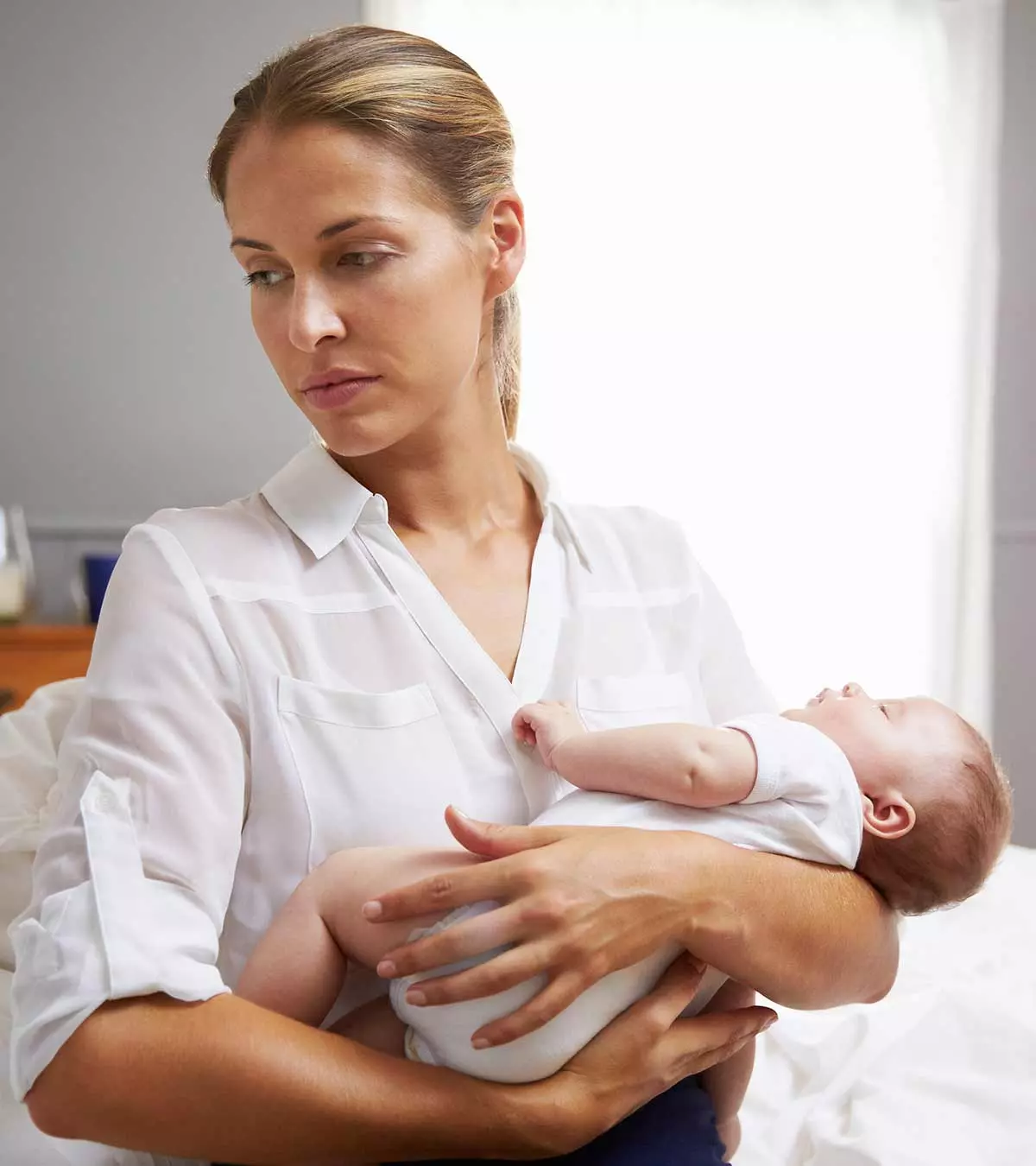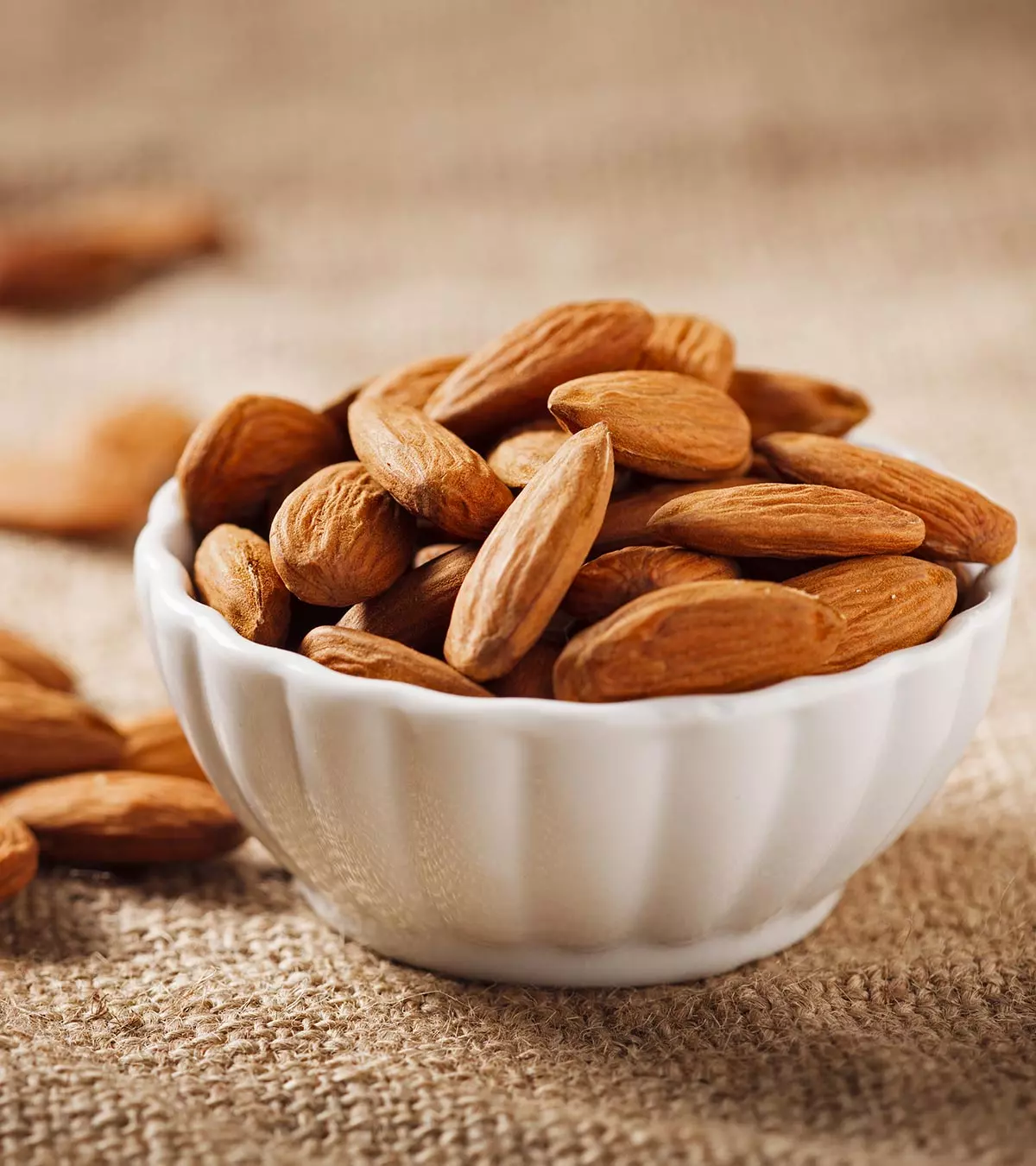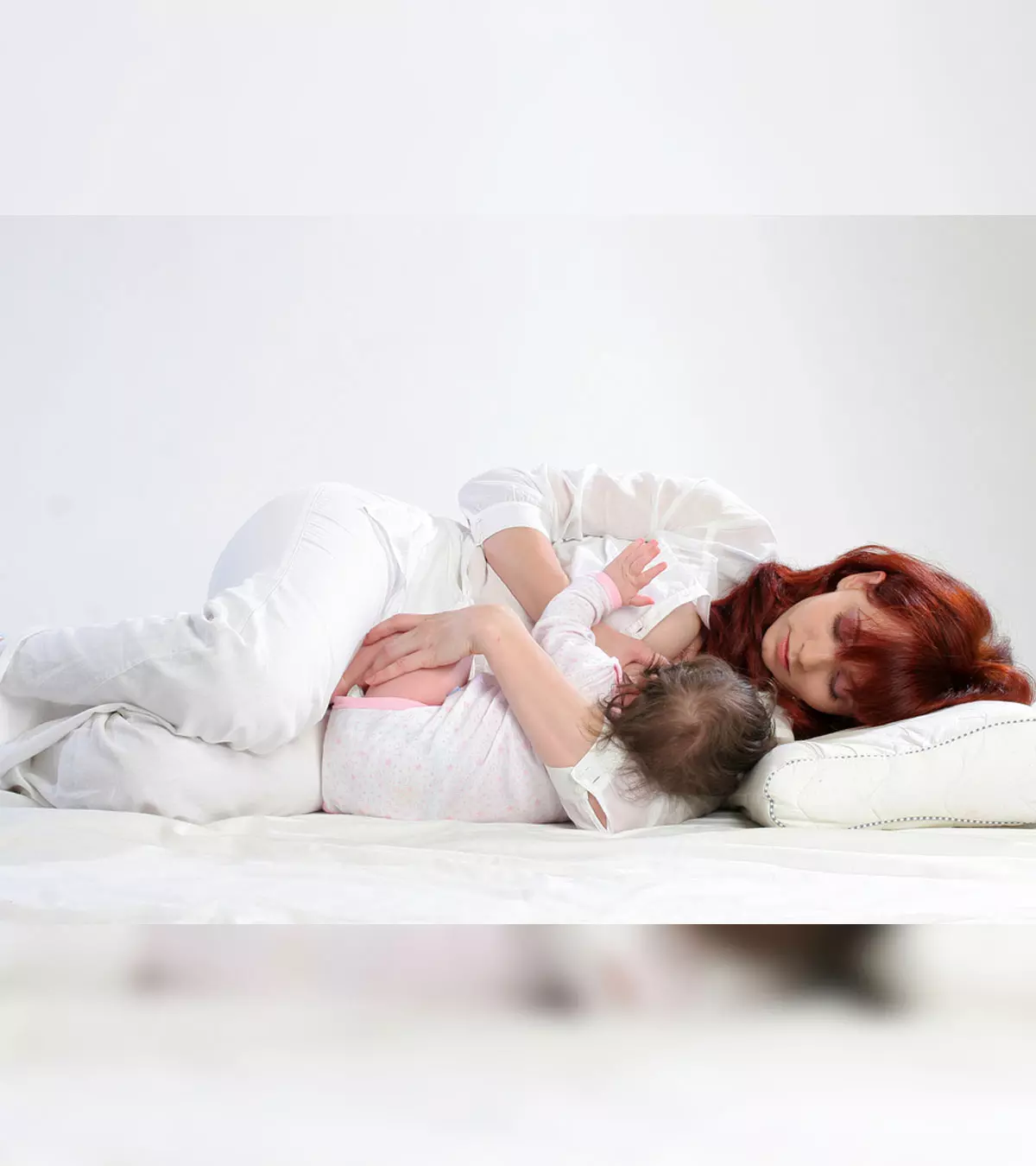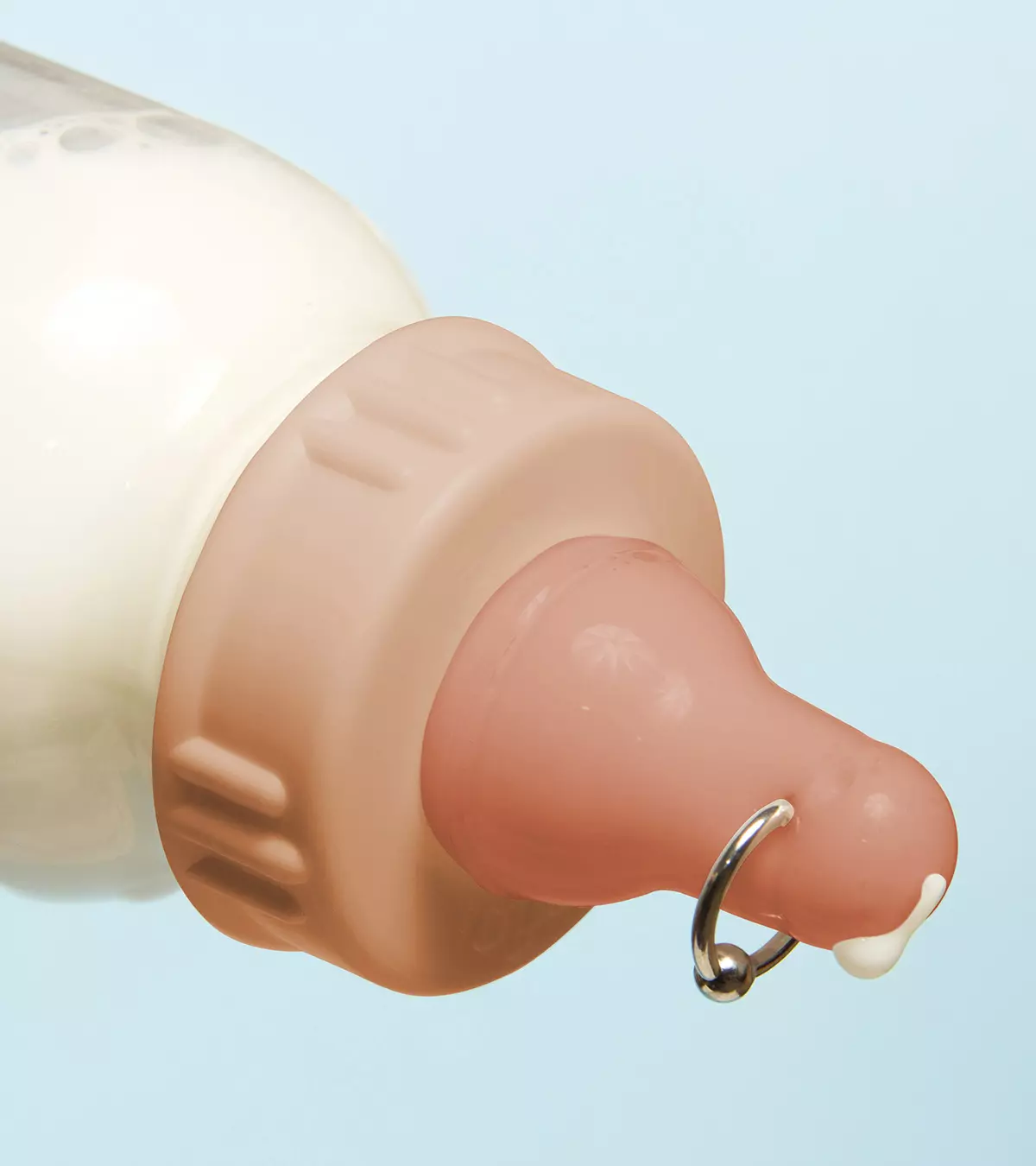
Image: Shutterstock
Motherhood involves various challenges, and one of them is breastfeeding. Some mothers might have pierced nipples, thus prompting them to ask if it is safe to breastfeed with nipple piercings. Although nipple piercing may not cause any harm to you, it raises the risk of choking or hurting the baby when feeding. Also, there can be cases where the piercing might hinder the milk flow from the nipple, affecting the baby’s nourishment.
Read on as we give you an insight into how nipple piercings affect breastfeeding and what precautions you should observe when breastfeeding a baby with pierced nipples.
Key Pointers
- Research on nipple piercings and breastfeeding is limited, but anecdotal evidence suggests no impact, although negative effects are possible.
- Nipple piercings can increase the risk of complications in breastfeeding, such as infections, latching difficulties, and choking hazards.
- To breastfeed safely with a pierced nipple, it is important to choose appropriate jewelry, wait for complete healing, and remove jewelry before feeding.
- Seek medical attention and stop breastfeeding if there is bleeding, complications due to piercing closure, or pus or liquid oozing from the nipple piercing.
Do Nipple Piercings Affect Breastfeeding?

Probably. There is insufficient research on the impact of maternal nipple piercings on breastfeeding and the infant. No global medical body or governmental organization has passed recommendations or statements regarding breastfeeding with pierced nipples (1).
Anecdotal accounts of mothers with pierced nipples reveal that the piercings have no impact on the milk flow, milk production, and the infant’s ability to breastfeed. Some experts also point out that several women with nipple piercings can breastfeed without any complications (1). Nevertheless, there can be some negative effects of a pierced nipple on breastfeeding.
How Do Nipple Piercings Affect Breastfeeding And The Baby?
Nipple piercings may not have a direct impact on breastfeeding, but seem to increase the risk of some complications and problems, which are discussed next.
- Nipple piercings have been linked to several infections. Lactation experts point out that mothers with nipple piercings are at a higher risk of infections like mastitis and hepatitis. There is also a higher risk of clogged milk ducts when the nipple is pierced (2). While a mother can still breastfeed with infection, some diseases like hepatitis C can transmit from the mother to baby through breastfeeding, unless the infant is immunized (3).

- The pierced nipple may cause abnormal milk production. Nipple piercings have been linked to abnormal milk production and the inadequacy of milk for the baby (4) .
- The pierced nipple could cause excess milk flow. Sometimes, when the baby suckles, the milk flows out from the pierced part of the nipple, creating excess milk flow. A mother who had scars from her nipple piercing shares how it caused some inconvenience when she started breastfeeding her newborn. She says, “If you are a person who scars easily, there is a great chance that you may have scar tissue between your piercing that leads to the end of the nipple. There was minor scarring in my breast, and that caused me to have a little bit of issues getting milk to come out…Breastfeeding would have been a lot easier had I not had that piercing (i).”
 Quick tip
Quick tip- The baby may have trouble latching to the nipple. The nipple jewelry could pose a problem in latching. A piercing on the nipple may result in scar tissue, distorting the shape of the nipple and making it difficult for a baby to maintain adequate suction.

- Nipple jewelry poses a choking hazard. The Australian Association of Breastfeeding states that nipple jewelry is a choking hazard to the baby 5. A nipple ring may loosen out and slip into the baby’s throat during breastfeeding.
The above problems do not entirely indicate that you cannot breastfeed with a nipple piercing. That said, you need to take some precautions when you are breastfeeding.
What Precautions To Take While Breastfeeding From A Pierced Nipple?
Here are a few ways to keep the baby safe:
- Choose jewelry meant for nipples. Wear jewelry that is designed for nipples and not other parts of the body. For instance, do not use an earring as a nipple ring. Choosing the right jewelry for your nipple can help prevent abnormal nipple scarring and prevent discomfort while feeding.
- Do not breastfeed until the nipple is entirely healed. Never breastfeed until the nipple has healed completely. A pierced nipple can take a very long time to heal, sometimes about 18 months (1). If you are planning to get pregnant and also get your nipple pierced, then get the nipple piercing done first. Make sure that the gap between the day of piercing and the day of delivery is over 18 months so that you can safely breastfeed your baby. Regularly check for infection signs like redness, swelling, or discharge, and consult a healthcare provider if needed.

- Remove the nipple ring/stud before feeding. Medical experts state that you must always remove a nipple ring before breastfeeding the baby (6). It makes breastfeeding less uncomfortable for the baby while also preventing the chances of choking. It is highly recommended and best practice to completely remove nipple jewelry during the entire time you plan to breastfeed. The piercing may close up, it is the safest for your baby.
 Caution
Caution- Use a piercing retainer when needed. If removing and putting the jewelry back seems too much of a chore, you can consider placing a hole retainer inside the piercing. The retainer is usually a piece of plastic or nylon that temporarily takes the place of the piercing. Of course, you need to remove the retainer before breastfeeding! But removing a retainer can be a lot easier and faster than removing the jewelry.
- Do not exclusively feed on the non-pierced nipple. Some mothers may only have one nipple pierced and thus invariably do all the feeding from the breast that does not have the piercing. That is not a good idea for both your breasts produce milk and using only one for feeding can lead to breast engorgement and clogged milk ducts and mastitis eventually. Use both breasts for feeding and remove the nipple jewelry before feeding the baby (7).
Following these precautions can help prevent the nipple piercing from being an obstacle to breastfeeding. However, there are some scenarios when you should pause breastfeeding and visit the doctor.
When To Visit A Doctor?

There could be times when the nipple piercing may pose a problem. Stop breastfeeding and visit a doctor when:
- There’s bleeding from the nipple piercing. If the nipple with the piercing is bleeding, chances are it has dried and blistered due to constant nursing. Bleeding may also happen if the baby bites while nursing. Pause breastfeeding from the affected breast and consult the doctor to prevent complications.
- The piercing closes, causing complications. If you are spending a lot of time without the nipple jewelry, then the piercing could close. The closure should not cause any complications, but if you notice some problem with the milk flow and production, then consult a doctor or lactation consultant.
- You notice pus or liquid oozing from the piercing. If you see a clear fluid or pus coming out from the piercing, along with pain that hinders breastfeeding, visit a doctor. Such a case is more likely to happen when you begin breastfeeding before the nipple heals.
Frequently Asked Questions
1. Do I have to take my nipple jewelry out when pregnant?
You do not have to take out your nipple jewelry during pregnancy if you are comfortable wearing them. However, if they cause soreness and pain, bother your skin, or show signs of infection as your breasts grow, it is better to replace them with a clean piercing holder made from a fishing line or polytetrafluoroethylene.
2. How fast do nipple piercings close?
After removing the nipple piercing, the closure might take anywhere from two days to a few weeks, depending on how long the jewelry has been worn and how fresh the pierced skin is. However, the accurate number of days cannot be pinpointed as the healing duration may vary from person to person.
3. Do nipple piercings ever fully heal?
Nipple piercings typically require three to six months for complete healing (10). Healing time may vary based on factors like skin type, jewelry, and aftercare. However, nursing mothers should ensure the piercing is fully healed before resuming breastfeeding to avoid complications.
4. How can I ensure my baby gets enough milk while breastfeeding with nipple piercings?
If you have nipple piercings and want to ensure your baby receives sufficient milk during breastfeeding, it is advisable to remove the jewelry before feeding. This will help prevent attachment issues and potential choking hazards. Well-executed piercings and premium-quality jewelry can also minimize risks (5).
5. Can I breastfeed with nipple shields if I have nipple piercings?
Yes, it is possible to breastfeed with nipple shields even if you have nipple piercings. These can provide a barrier between the piercing and the baby’s mouth, reducing any discomfort or potential issues. It’s important to consult a lactation specialist for personalized advice and guidance (11).
6. Is breastfeeding with nipple piercings if I have a history of mastitis or other breastfeeding-related infections?
The safety of breastfeeding while having nipple piercings, particularly for those who have had mastitis or infections related to breastfeeding, raises concerns due to the associated risks. Piercings can heighten the chances of infections and complications that may impact lactation and the baby’s health, including infection, scar tissue, blocked milk ducts, and insufficient milk flow (2).
8. Can nipple piercings affect the taste or smell of breast milk?
No, nipple piercings do not impact the taste or scent of breast milk. The composition and flavor of breast milk remain unaltered, irrespective of whether the mother has nipple piercings.
9. Can I breastfeed with nipple piercings if I have flat or inverted nipples?
Yes, you can breastfeed with nipple piercings, even if your nipples are flat or inverted. It may be challenging, but as long as your nipples can protrude when stimulated, breastfeeding is possible. Remember to remove the jewelry before feeding to avoid choking (12).
Breastfeeding with pierced nipples is not contraindicated, but it may cause complications such as infections, underproduction or overproduction of breastmilk, latching issues for babies, or the nipple jewelry might also be a choking hazard. Therefore, it is important to maintain the suggested gap between getting your nipples pierced and the expected day of starting breastfeeding. Follow proper hygiene and keep the piercing clean to keep infections at bay. If you have pierced nipples, you may consider talking to your lactation consultant or gynecologist to help you have a smooth breastfeeding journey.
Infographic: Possible Effects Of Nipple Piercings On Breastfeeding
Nipple piercings have grown in popularity. But it may also raise concerns about the safe breastfeeding of a baby, considering the potential impact of piercings on breastfeeding and the well-being of infants. The infographic below enlists potential problems that may arise during breastfeeding due to nipple piercings in a lactating woman.

Illustration: Momjunction Design Team
If you have nipple piercings and contemplating breastfeeding your little one, do not be worried. Check out this informative video to get some handy tips to make it work without pain.
Personal Experience: Source
MomJunction articles include first-hand experiences to provide you with better insights through real-life narratives. Here are the sources of personal accounts referenced in this article.
i. Can you breastfeed with nipple piercings? https://www.youtube.com/watch?v=UMTOl7uUUX0References
- Breastfeeding after Breast or Nipple Surgery.
https://my.clevelandclinic.org/health/articles/15585-breastfeeding-after-breast-or-nipple-surgery - Is Nipple Piercing Compatible with Breastfeeding?.
https://journals.sagepub.com/doi/10.1177/0890334404266876 - Serious Illnesses and Breastfeeding.
https://www.healthychildren.org/English/ages-stages/baby/breastfeeding/pages/Serious-Illnesses-and-Breastfeeding.aspx - Mind the (Teeth) Gap — And Other Hazards of Body Piercings.
https://www.buffalo.edu/content/dam/www/news/imported/pdf/August10/WallStreetJournalTabbaaTonguePiercing.pdf - Breastfeeding and nipple piercing.
https://www.breastfeeding.asn.au/resources/nipple-piercing - Nipple Piercings.
https://llli.org/breastfeeding-info/nipple-piercings/ - Nipple piercings.
https://goaskalice.columbia.edu/answered-questions/nipple-piercings/ - Too much breast milk? How to reduce oversupply?
https://www.medela.com/en-in/breastfeeding-pumping/articles/breastfeeding-challenges/too-much-breast-milk-how-to-reduce-oversupply - Milk Oversupply
https://www.peacehealth.org/medical-topics/id/abr7764 - Body Piercing
https://www.sutterhealth.org/health/body-piercing - Nipple Shields for Breastfeeding: When & How To Use Them
https://my.clevelandclinic.org/health/treatments/22130-nipple-shield - Possible Problems: Inverted, Flat, or Pierced Nipples – HealthyChildren.org
https://www.healthychildren.org/English/ages-stages/baby/breastfeeding/Pages/Possible-Problems-Inverted-Flat-or-Pierced-Nipples.aspx
Community Experiences
Join the conversation and become a part of our nurturing community! Share your stories, experiences, and insights to connect with fellow parents.
Read full bio of Briana Violand
Read full bio of Rohit Garoo
Read full bio of Dr. Ritika Shah
Read full bio of Anindita Ghatak






